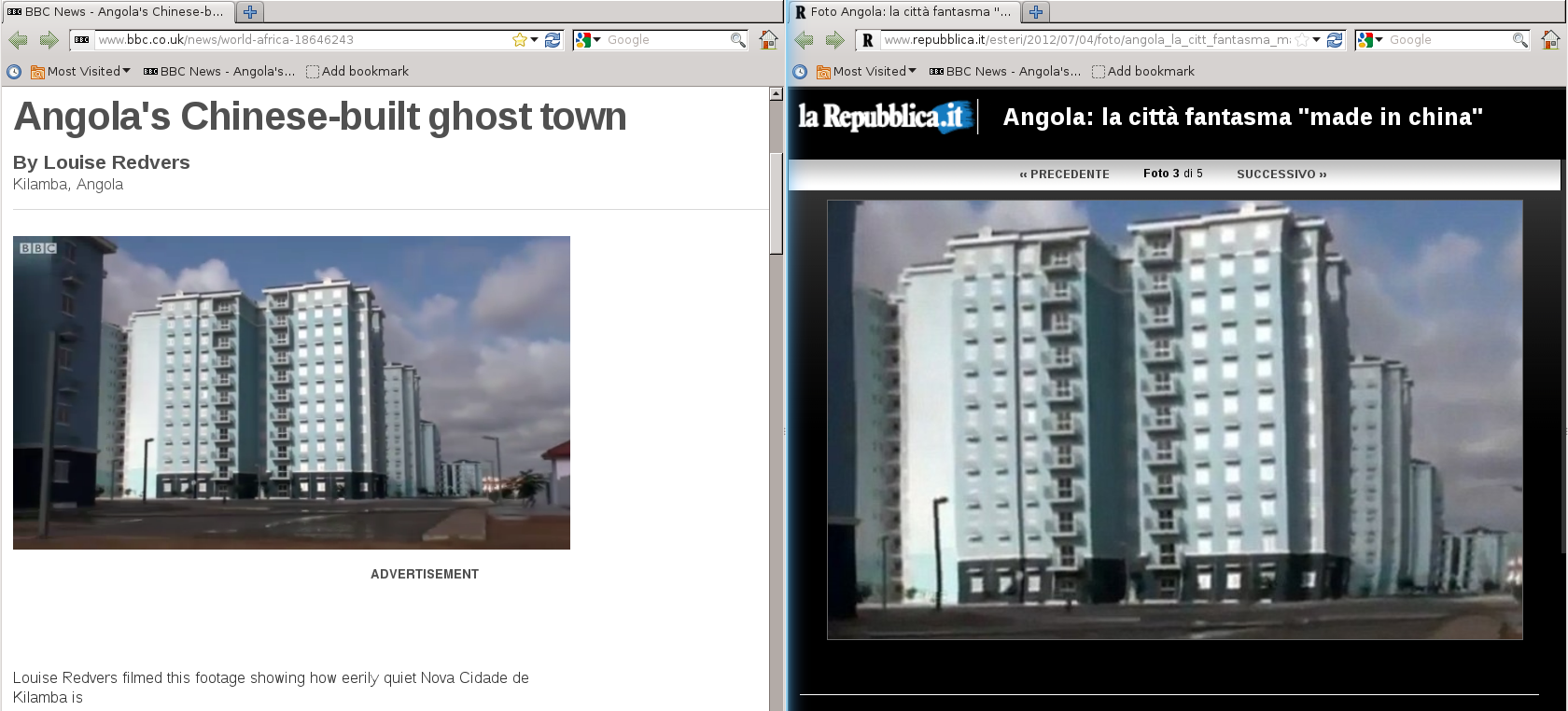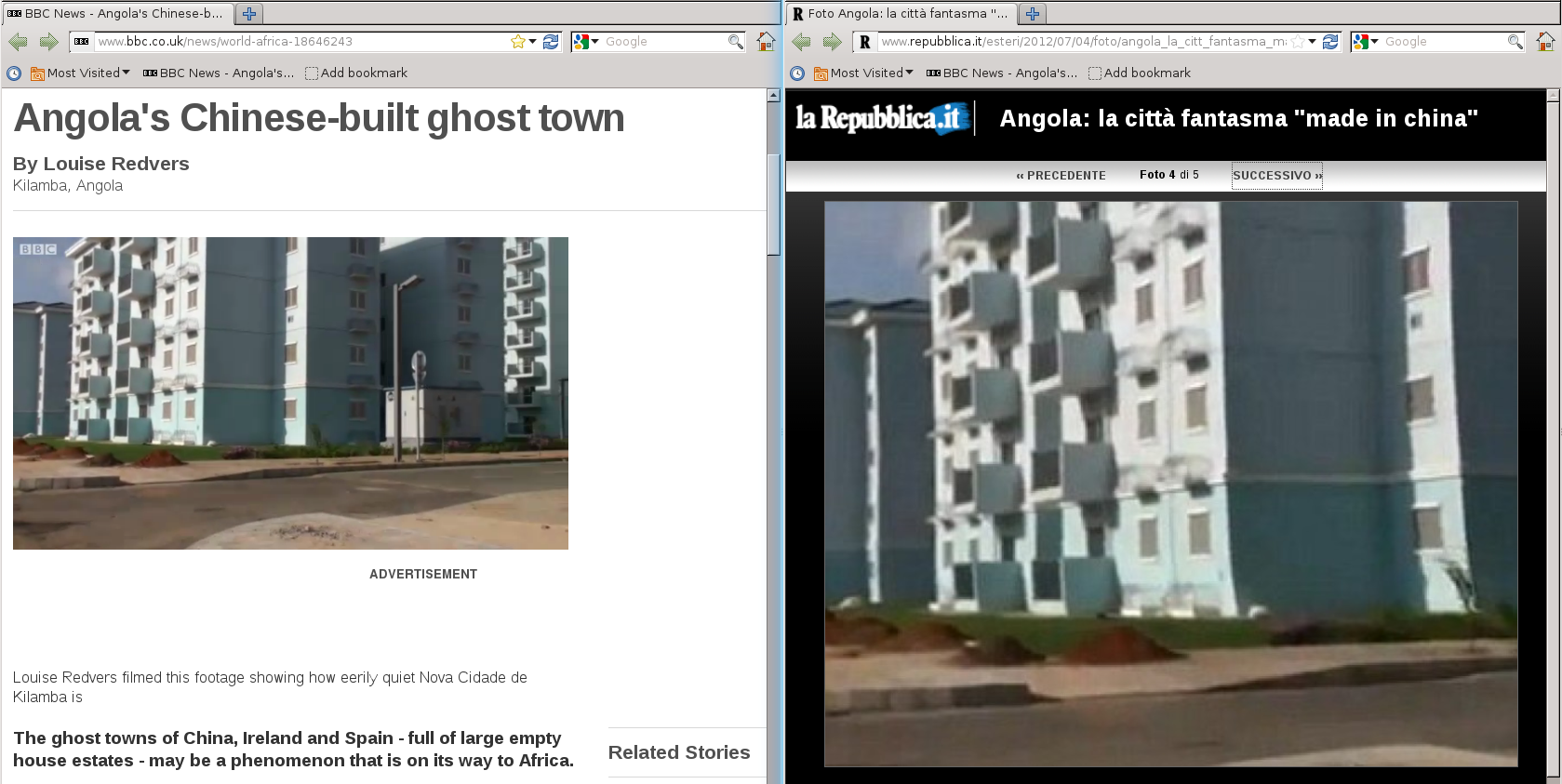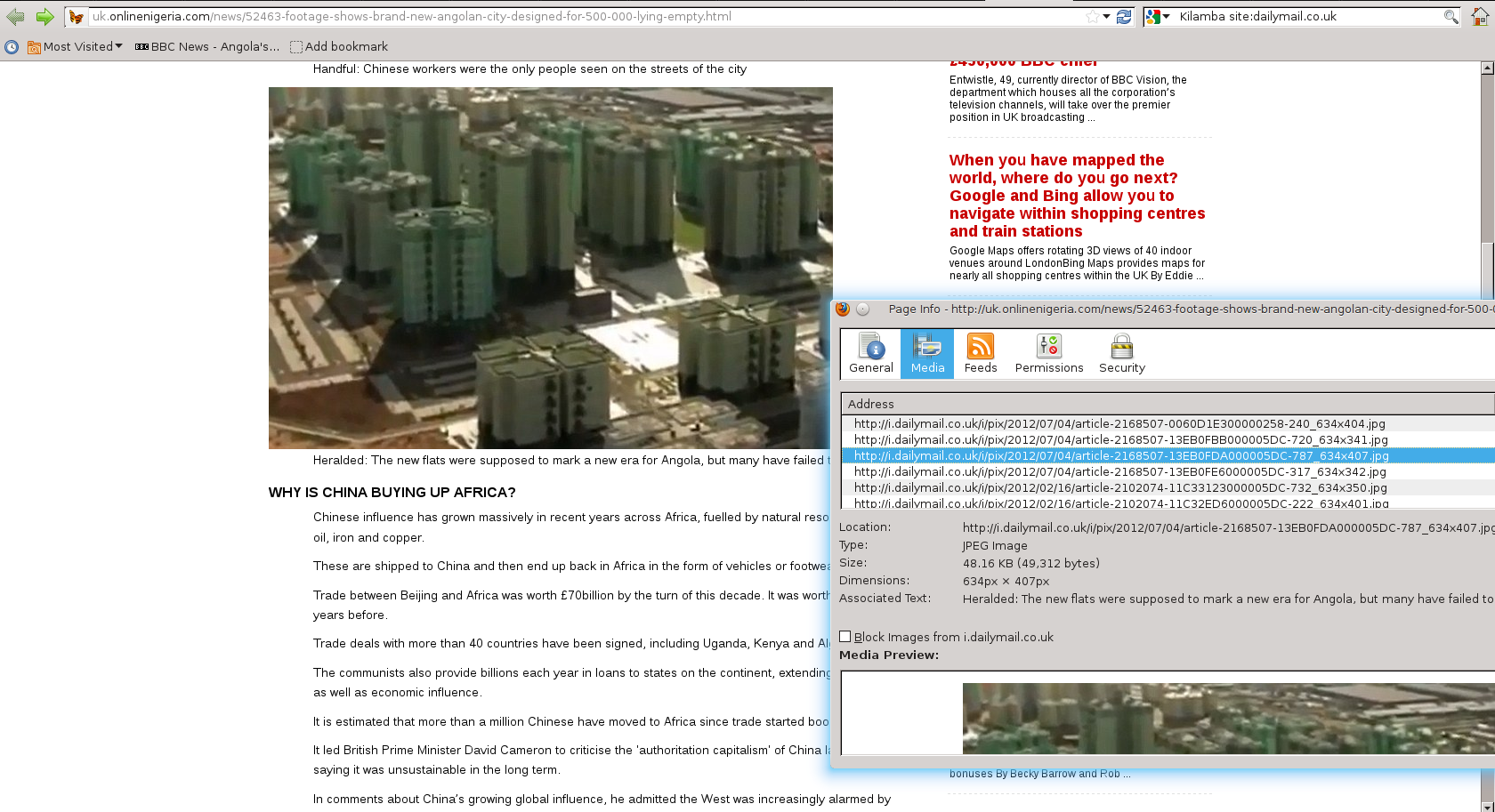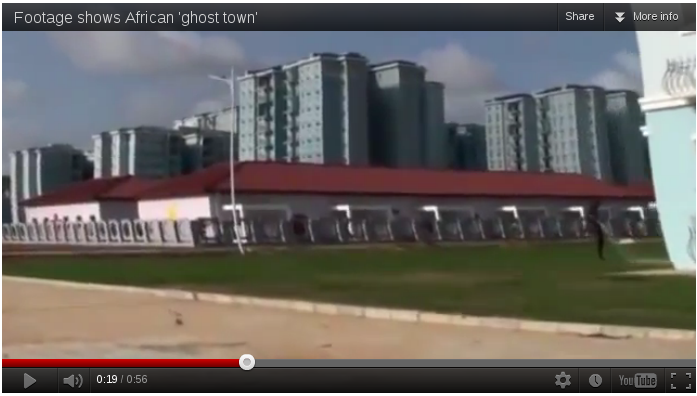Angola ghost town shows the mess that "professional media" make of copyright
In the afternoon of July 4th, 2012, I found in my RSS reader the link to a photographic gallery on the website of “La Repubblica”, one of the biggest italian newspapers, titled Angola: la città fantasma “made in china” (Angola, the “Made in China” ghost town): five blurry pictures, without any attribution, and a caption explaining that:
Nova Cidade de Kilamba, outside Luanda, boasts 750 apartment buildings, a dozen schools, more than one hundred shops, parking lots and sport facilities. Built by a Chinese company during the real estate boom, Kilamba has one handicap: no Angola citizen can afford to live there. The average income is about 40 pounds/month, but apartment prices start at 75,000 pounds. The result is that of about 3000 apartments on sale, only 220 were bought…

Besides the one of urban planning in Kilamba, that gallery shows another failure: the one that “professional” journalists and media outlets with attribution, quoting sources and copyright in general. As you can see from the first two screenshots showing the two websites side by side, four of those pictures are nothing else that bad captures of this footage by Louise Redvers, published by BBC the day before. Not only the snapshots and the text are without any attribution, but the images have been cropped to not show the BBC logo!

Who did it? No, wait: who did what? I’m not sure. Because the first picture in the Repubblica gallery is not in the Redvers/BBC video. So they copied from at least two places. After realizing this, I found out in a few minutes that:
- that first picture at Repubblica’s website comes from Online Nigeria.com..
- which in turn has copied almost entirely the whole article from the Daily Mail…
- without even bothering to make its own local copies of the pictures, in order to not take advantage of the Daily Mail bandwidth (look the URL of the picture in the third figure)…

- but wait! Why is the video in the Daily Mail page the same footage, just cropped and warped that all buildings seem to have curved walls (picture below)? Oh, I know, it’s because…

Note the curved wall of the building on the left
</em></u>
- as you yourself can see if you click to “Watch on YouTube”, the Daily Mail embedded a pirate video, published by some worthless loser looking to place some ads
- but why did that worthless loser ruin the BBC video in that way? Surely he didn’t do it to fool the YouTube Content-ID automatic video detection system so he could keep making money with ads, did he?
Excluding, for different but obvious reasons, both the worthless loser and BBC, the websites mentioned here belong to “professional” media businesses, who employ “professional” journalists and claim at the bottom of their pages that same copyright that in this case they merrily screwed up. What should they do now?
Who writes this, why, and how to help
I am Marco Fioretti, tech writer and aspiring polymath doing human-digital research and popularization.
I do it because YOUR civil rights and the quality of YOUR life depend every year more on how software is used AROUND you.
To this end, I have already shared more than a million words on this blog, without any paywall or user tracking, and am sharing the next million through a newsletter, also without any paywall.
The more direct support I get, the more I can continue to inform for free parents, teachers, decision makers, and everybody else who should know more stuff like this. You can support me with paid subscriptions to my newsletter, donations via PayPal (mfioretti@nexaima.net) or LiberaPay, or in any of the other ways listed here.THANKS for your support!